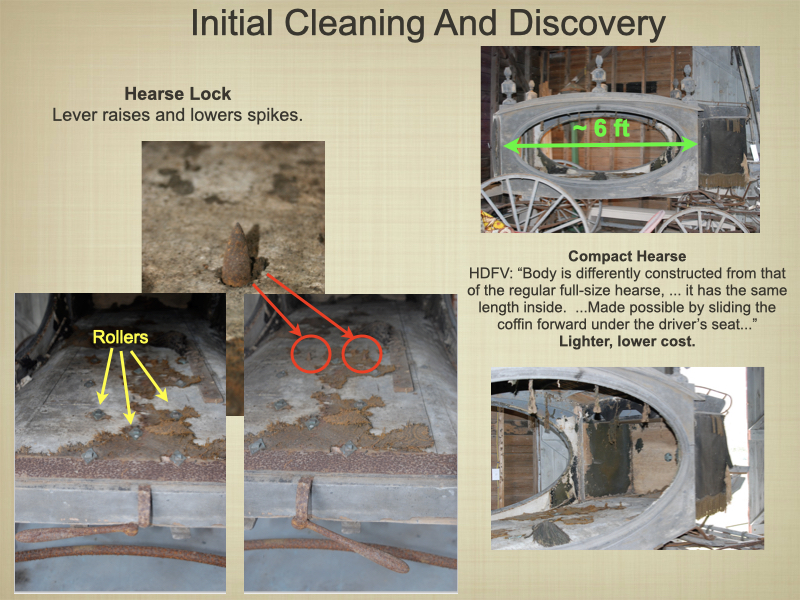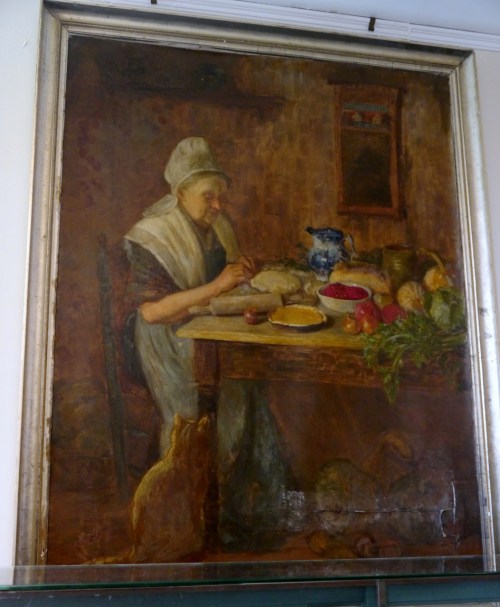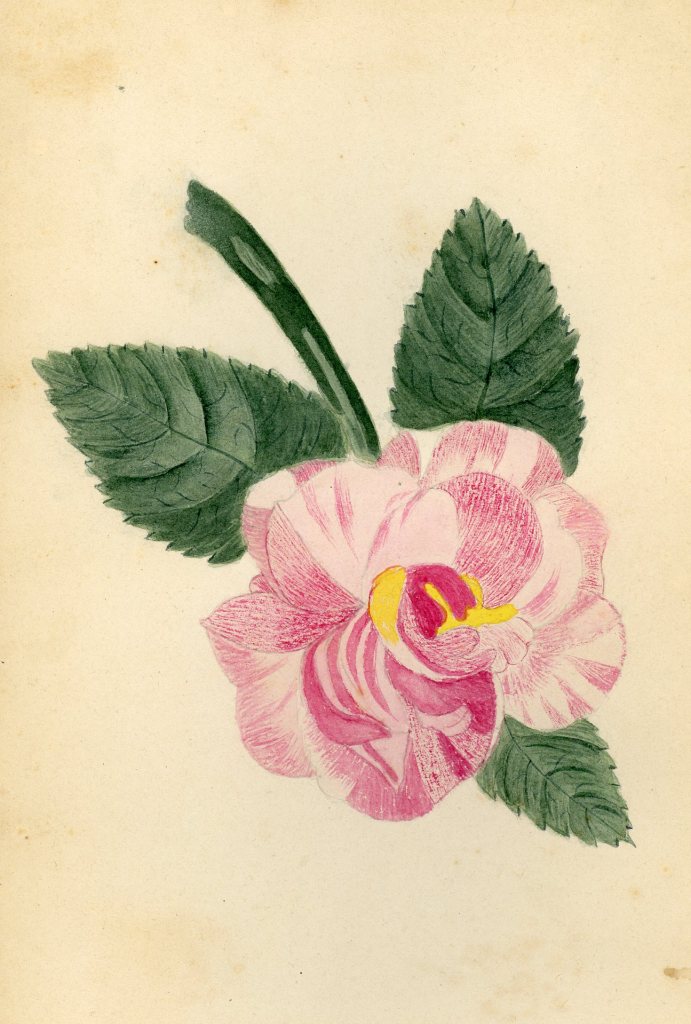As we approach Halloween it might be fitting to tell you the story behind our horse-drawn hearse. Visitors to the Old Town Hall exhibits at the Portsmouth Historical Society either love the hearse or back away from it with dread.
At first glance people remark that the hearse looks short and therefore people must have been shorter a hundred and fifty years ago. If you look closer you can see that the coffin would fit under the coachman’s seat. There are spikes that can be raised to hold the coffin in place and rollers to make it easier to slide. Our hearse looks grey, but we have determined that it was originally black – the traditional color. On top of the carriage there are six “urns” with carved wood flames that can be removed so that black feathers could be inserted instead. The more important the deceased the more feathers would be on display.
How did we come to have a hearse? At first we thought it had belonged to the Christian Union Church that now is the Portsmouth Historical Society headquarters. Indeed, church records say they bought one in 1871. Later church records show that hearse was disposed of in 1903. So whose hearse did we have? Newspaper clippings from the 1940s about the donation of the hearse led to the discovery that it had belonged to Asa Anthony, the Portsmouth Town Coroner in the 1880s. He used it to transport the deceased to his home until a funeral was arranged. Ironically, his home is today the Connor’s Funeral Home. When the Society received the hearse there was no place to store it, so it was housed at the Breaker’s Stables. A fire there in 1970 forced it to be moved to and stored by the Little Compton Historical Society. When Old Town Hall became available as an exhibit space, we moved it here in 2009.
The hearse has let us to explore Victorian mourning customs and aspects of Portsmouth history. We are still looking for photos of the hearse in 1943 when it won prizes in a parade. No doubt it will lead us to more stories.
This is the first of a series of blog entries on items in our Old Town Hall collection. We were not able to open the Old Town Hall exhibits this summer, so these blogs can serve as a virtual tour as well. If you learn more about the stories behind the items you might appreciate them and what they can teach you about Portsmouth history.







